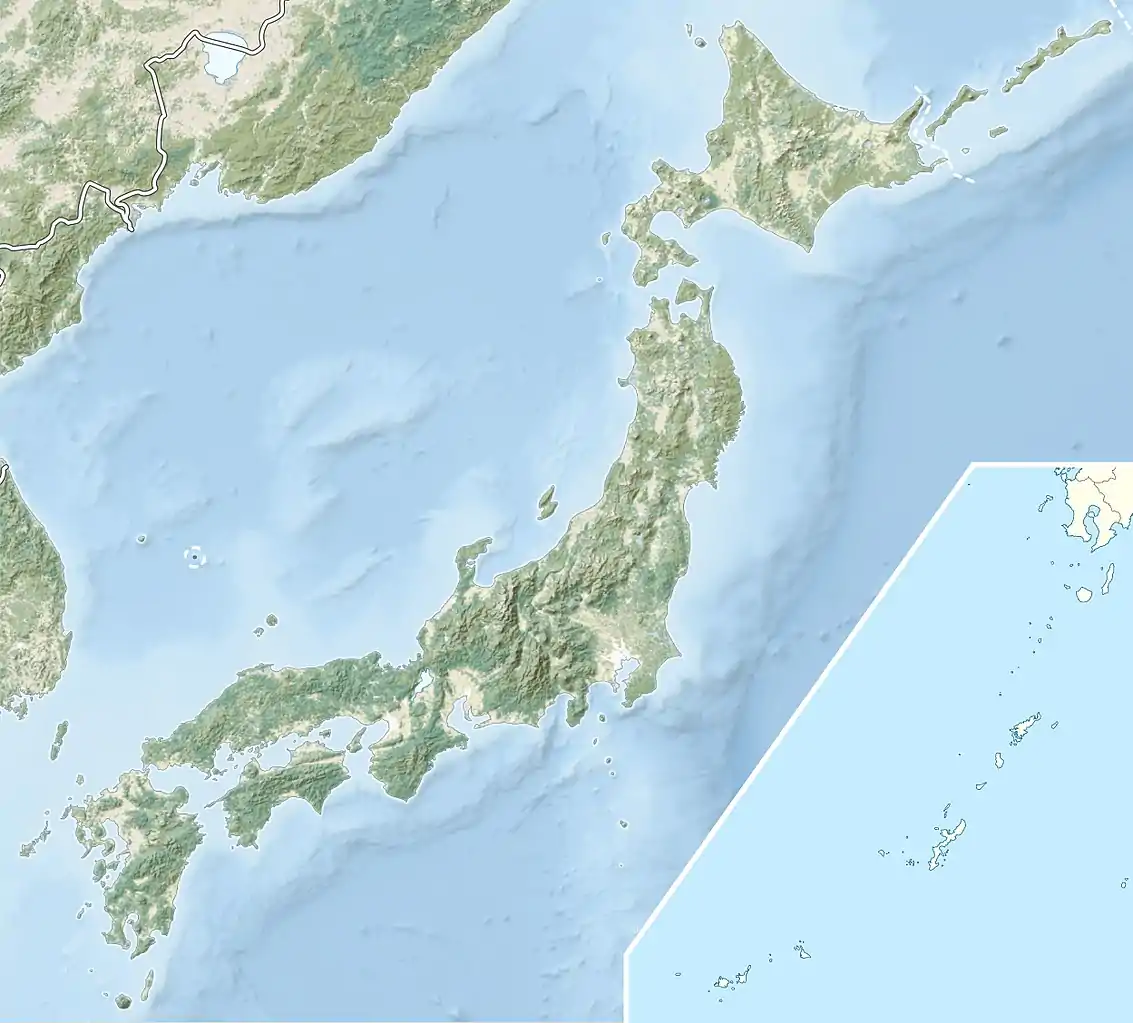Shijimizuka site
The Shijimizuka ruins (蜆塚遺跡, Shijimizuka iseki) is an archaeological site containing a late to final Jōmon period settlement trace and shell middens, located in what is now Naka-ku, Hamamatsu, Shizuoka Prefecture, Japan. The settlement was inhabited from approximately 2000 BC – 1000 BC. In 1959, the site was designated a National Historic Site and was opened to the public as an archaeological park.[1] A number of the pit dwellings have been reconstructed. The site also preserves a late-19th-century farmhouse.
蜆塚遺跡 | |
.jpg.webp) Shimijizuka restored pit dwellings | |
 Shijimizuka ruins  Shijimizuka site (Japan) | |
| Location | Naka-ku, Hamamatsu, Shizuoka, Japan |
|---|---|
| Region | Tōkai region |
| Coordinates | 34°42′48.95″N 137°42′12.21″E |
| Type | Settlement, midden |
| History | |
| Founded | 2000-1000 BC |
| Periods | Jōmon period |
| Site notes | |
| Ownership | National Historic Site |
| Public access | Yes |
Overview
The existence of a number of large shell middens containing millions of shells of freshwater bivalve clams was noted in the region, per mid-Edo period records. The Shimijizuka site is located on a small plateau approximately one kilometer from Lake Sakaru, which had plentiful smelt and shijimi clams until the early 1930s. A portion of the Shijimizuka site was destroyed by local farmers mining it for fertilizer in the 1830s. However, with the excavation of the Ōmori Shell Middens by Edward S. Morse of the Tokyo Imperial University in 1877, due academic attention became focussed on the Hamamatsu site, and preliminary investigations were conducted by Tokyo Imperial University in 1889. These investigations recovered earthenware fragments and stone tools, and confirmed that the site dated from the Jōmon period.
Subsequent excavations in 1895 and 1915 uncovered human bones from 30 grave sites, as well as necklaces and bracelets made from shells. The bones of deer and wild boar were also found. Later excavations were conducted by Kyoto Imperial University in 1920–1922 uncovered the foundations of twenty pit dwellings.
The site was further explored using modern methods by the University of Shizuoka from 1954–1955 and in 1983. Many of the artifacts, which included iron arrowheads, jewelry and pottery, are on display at the adjacent Hamamatsu City Museum.
At present, the shell midden is divided into four parts. One part is preserved with the cross-section on display to a depth of approximately 1.5 meters, indicating habitation of the site for approximately 1000 years. In addition to the shells and animal bones, the bones of various saltwater fish have been discovered, indicating that the site was rich in both marine and forest resources.
References
- "蜆塚遺跡" [Shijimizuka iseki] (in Japanese). Agency for Cultural Affairs.
- Pearson, Richard J., Windows on the Japanese Past: Studies in Archaeology and Prehistory, University of Michigan (1986), ISBN 0939512238
